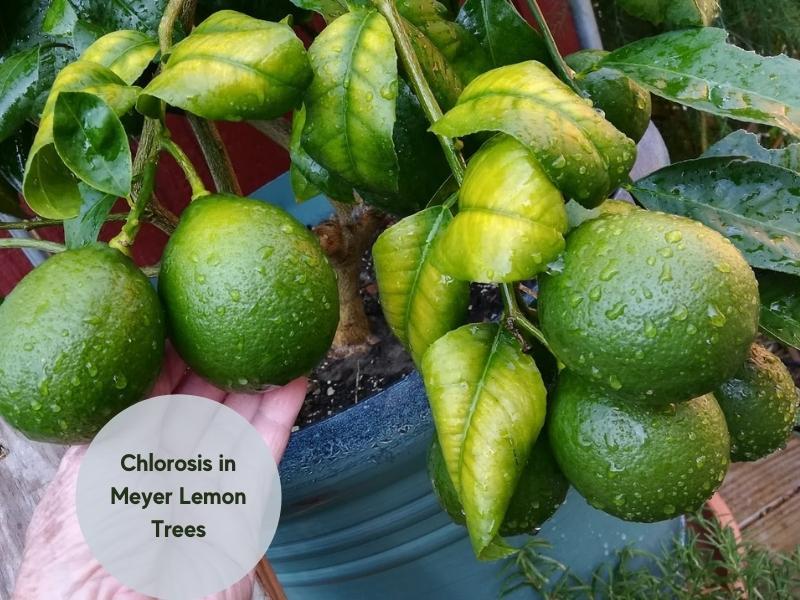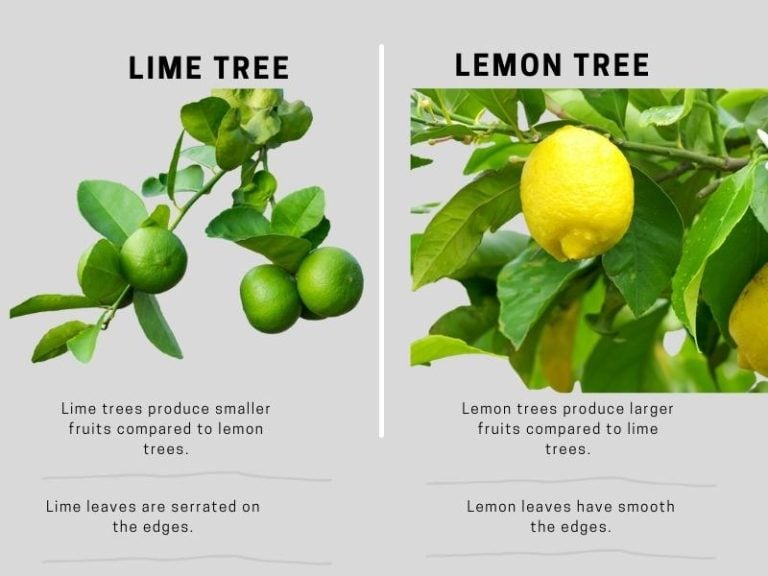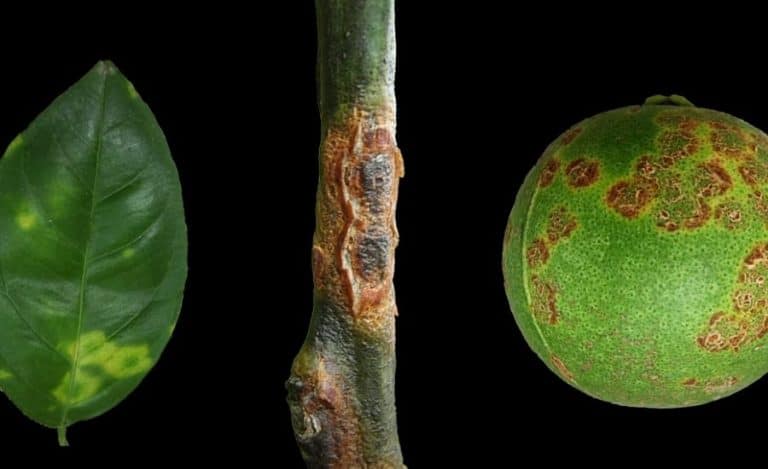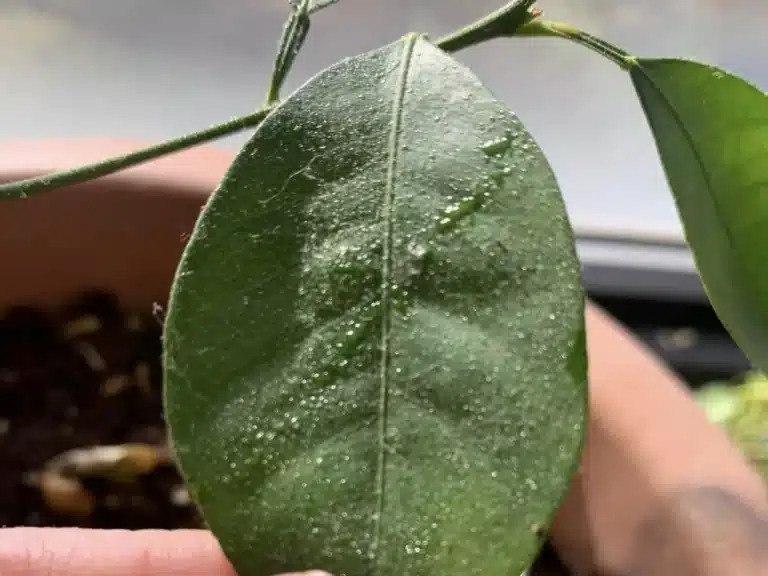Meyer Lemon Tree Problems and Solutions
Meyer lemon trees are rich and lively trees with plenty of orange fruits, they mostly bear fruits during spring and winter. They thrive well in moist but not soggy sandy loam soil.
With Meyer lemon, you do not need to keep multiple plants for your tree to bear fruits. These trees do not need protection from temperatures below 20°F.
Common Meyer Lemon Tree Problems
Here are some of the problems with Meyer lemon trees:
1. It is easy to overwater Meyer lemons
Overwatering saturates your tree and the soil around it causing nutrient deficiencies and diseases. The main sign of overwatering is yellowing and leaves falling off the tree. Overwatering your lemon tree may stop the roots from functioning properly, causing harm to the plant in the end.
To fix the overwatering problem, use a slightly wider pot that is not too deep because the Meyer lemon tree has shallow roots. Ensure that your pot drains well and fast then repot the lemon tree in a well-draining soil mix.
Water regularly for the first week or so then once or twice a week in the next couple of months to fix the overwatering problem.
2. Prone to nutrient deficiency

When the growing conditions of your Meyer lemon tree are poor, they are not able to take up nutrients in the soil. Nutrient deficiencies lead to the leaves of your tree turning yellow or brown, stunted growth, and poor flowering.
Commonly deficient nutrients include the following:
Nitrogen deficiency
It takes place in old leaves then moves towards the younger leaves. The leaves will turn light green then as the deficiency increases the leaves will turn yellow. Your nitrogen-deficient Meyer lemon tree may have stunted growth and low fruit production.
Apply nitrogen-rich fertilizers such as chicken manure to fix the problem.
Iron deficiency
Iron deficiency occurs mostly in winter and can be caused by high soil pH and poor drainage. Leaves will begin to turn yellow with dark green veins. Meyer lemon trees feed heavily and to maintain a healthy tree you will need to boost the feeding.
Adding iron sulfate and iron chelate helps increase the iron content in the soil. However, looking into high soil pH is the best durable solution for this problem. You can also add sulfur to lower the soil pH.
Magnesium deficiency
The most visible sign of magnesium deficiency is the yellowing of leaves between the veins. It occurs on older leaves when the soil pH is too acidic
To treat magnesium deficiency, use Epsom Salt (Magnesium Sulphate). Dissolve 4 teaspoons of Epsom salt into a liter of water then spray around the drip line of the tree. Ensure you are 10 centimeters away from the stem when applying and repeat the treatment every month.
Zinc deficiency
Zinc deficiency occurs first on young leaves yellowing them. In more severe cases the veins will turn yellow with spots and reduce in size. Leaves may start to turn brown at the tip and die off.
Zinc can also be added as a trace element in a leaf spray or as part of kelp solution spray.
Common pests and diseases
When you grow your own Meyer lemon tree, there is probability of it having one or more meyer lemon tree problems. You will know your tree is suffering from pests and diseases when the leaves start to turn yellow, stunted growth, fruits will fall off early, spots on the leaves and the tree will become weak.
Here are some of the diseases that affect Meyer lemon trees:
3. Armillaria root rot
Armillaria root rot is caused by a fungus that sometimes damages and kills the Meyer lemon tree. The first symptoms are stunted growth, yellowing of leaves, and early leaf drop. The fungus spreads by its roots through the soil then penetrates into the Meyer lemon tree, destroying its root system.
Treatment
To manage Armillaria root rot, prevent infection of new trees because once a tree is infected, it will be difficult to save it. If you have infected trees in your garden, remove the trees completely together with their root systems. Wait for at least a year before replanting in areas where there were infected trees.
4. Greasy spot fungus
Greasy spot spores sprout from the lower leaf surface and appear yellow to brown to black lesions. As the lesions develop on the lower leaf surface, they darken more and eventually form a spot on the upper leaf surface.
Affected Meyer lemon leaves fall off prematurely, weakening the tree and increasing the chances of it being attacked by other pests and diseases.
Treatment:
Mix 2 to 4 tablespoons of copper fungicide with 3 to 4 liters of water or as per the instructions on the label. Stir and spray infected Meyer lemon trees as soon as the first symptom occurs. Repeat the process every 1 to 2 weeks until the fungus is gone.
5. Citrus scab disease
Citrus scab is frequent during the rainy seasons. It presents as round, scaly lesions that appear on young leaves, stems, and fruits first. The lesions begin as pinkish spots that turn to brown then eventually turn dark grey.
Treatment
To treat citrus scab mix the copper fungicide with water as per label directions. The first spray should be applied when the first sprong leaves appear, the second spray applied when flower petals fall from the tree and the last spray is applied at least 3 weeks after the second spray.
6. Tristeza disease
Tristeza disease is caused by viruses and the infected trees develop light green leaves. The disease makes young trees flower prematurely. Severely infected Meyer trees will show stunted growth with fragile twigs.
Managing tristeza depends on preventive measures such as tristeza-free material and tolerant rootstocks. Spray young Meyer lemon trees with insecticide frequently.
7. Citrus canker
Citrus canker is caused by a contagious bacterial infection that causes yellow halo-like lesions on fruits, twigs, and even leaves of the Meyer lemon tree. If not treated soon enough, its progression will lead to dieback, leaf loss, and fruit dropping.
Treatment: Spray your tree with liquid copper fungicides to prevent citrus canker disease. If the tree is already infected, destroy it because there is no treatment for it.
8. Anthracnose
Anthracnose is a major fungal problem in Meyer lemon trees characterized by dark spots with a dark outline that looks like a healing bruise. Affected lemon tree leaves start to curl, and the tree may present with twig dieback, leaf spots, and early leaf drop.
You can treat anthracnose by removing all the plant waste from the base of your Meyer lemon tree. Also, prune and destroy all the infected twigs and leaves to prevent the disease from spreading.
Common pests that may be affecting your Meyer lemon tree are:
9. Thrips
Thrips are pests that feed mainly on the sepals of young Meyer lemon tree fruit, causing a ring of scarred tissues as the peel expands. Adult thrips are small,orange-yellow in color with fringed wings.
To avoid stimulating the reproduction of the thrips population, try using non-chemical methods such as natural insecticidal soap, neem oil, or pruning the flowers.
10. Aphids
Aphids are small soft-bodied black insects that are more damaging to young Meyer lemon trees than mature ones. They suck sap and cause the leaves to wither and turn yellow.
After consuming the sap they secrete a sticky substance known as “Honeydew” which attracts ants to feed on the plant, causing extra damage to your Meyer lemon tree.
Pesticides are usually not recommended due to resistance and the trees will have to put up with curling leaves. You can remove aphids by spraying water with enough pressure or encouraging natural predators such as ladybugs.
11. Citrus leaf miners
Leaf miners cause a lot of damage and problems to young trees, making them vulnerable to many citrus diseases. To recognize the presence of these insects in your tree, look at how they affect the leaves. You will see a curved pathway around the leaf that has been extracted.
You can put mesh at the bottom of the tree to make it difficult for the insect to complete its life cycle. Also, you can use neem oil to kill the bugs on your citrus trees.
What are the signs of a lemon tree dying?
When your Meyer lemon isn’t producing new foliage and fruits anymore, it may be a sign that something is wrong that if not treated, the tree may die. Overwatering, pests, and diseases are the main problems that can kill your lemon tree.
Here are signs that the tree is in danger of dying:
- Stunted growth: Lemon trees have high water requirements and their growth will rapidly be poor when they do not get enough water supply.
- Leaves turning yellow: Temperatures that are lower than 50°F and nutrients deficiencies in the soil cause yellowing of lemon tree leaves. Both overwatering and underwatering can also turn leaves yellow thus making them fall off.
- Fruits dropping prematurely: Lemon tree fruits can be damaged by cold and be water-soaked on the inside making the fruit to be loosely attached to the stem and drop down prematurely.
- Leaf dieback: Leaf dieback often happens when large parts of the lemon tree turn brown and wither, not able to hydrate properly in cold seasons. These leaves if not pruned will increase the risk of infection from fungi and diseases.
READ ALSO: Lemon vs Lime Differences
References







My Myers lemon has lost all leaves from honey dew. What do I do now? Sprayed with neem and now have it outside. Is it salvageable?
It’s good that you’ve already taken steps to spray the tree with neem oil and get it outside. You’re on the right track.
To help get the honeydew under control, I suggest continuing to monitor closely for any pests like aphids, whiteflies or soft scales that produce it.
I’d use a strong water spray to wash off any honeydew buildup and repeat neem oil treatments to completely eliminate pests.
My lemons grow nice size, but don’t turn yellow
My meyer lemon tree is developing yellow spots on all the leaves, starting at the bottom, and then they drop off. There is no black spotting or rings developing, just yellowing.
Hey Janet, I’m sorry to hear your Meyer lemon tree is having issues.
It sounds like the yellowing is starting from the bottom leaves and moving up, which makes me think it could potentially be a nutritional deficiency. Meyer lemons are heavy feeders and need consistent nutrients. Since the yellowing isn’t accompanied by spots or rings, it likely rules out lemon diseases like anthracnose or greasy spot fungus.
Here are a few tips that may help:
Test your soil pH and make sure it’s in the ideal range of 6-7. Improper pH can prevent nutrient uptake.
Fertilize regularly with a citrus fertilizer to provide key nutrients like nitrogen, magnesium, iron, and zinc. I recommend monthly feeding during spring and summer.
Check soil drainage and make sure water isn’t pooling. Proper drainage helps prevent root that is known to cause leaf yellowing in citrus trees.
I hope that helps.